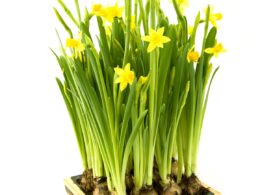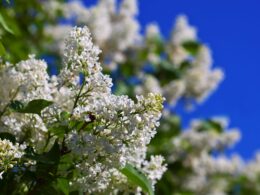When to Plant Zinnia Seeds in the Ground – General Rules
If you’re going to sow them outdoors, when to plant zinnia seeds? Remember that these flowers prefer warm weather, so it’s best to do it when all danger of frost has passed. That usually means you should wait with outdoor planting until mid- to late spring. Hardiness zones 3-10 are the best for zinnias to thrive.
Once the seeds have been planted, they will germinate quickly and bloom throughout the summer months. With a little care, you can enjoy these beautiful flowers all season long.
How to Plant Zinnias in the Ground?
When planting zinnias, it’s best to wait until the soil has warmed up in spring. Then, simply scatter the seeds on the ground in rows or clumps a few inches apart, and lightly rake them into the soil. Be sure to keep the area well-watered, as zinnias need consistent moisture to germinate.
Within a few weeks, you should see little green sprouts poking through the soil. Once they’ve grown four leaves, you can thin them out so that they’re spaced 8-18 inches apart, depending on the variety.
How to Choose a Spot for Planting Zinnias?
When planting zinnia seeds, it’s important to choose a spot that gets plenty of sun. In warmer climates, they can bloom in partial shade, but they’ll be more susceptible to diseases than zinnias grown in full sun.
These flowers prefer fertile, well-drained soil rich in organic matter. If your garden has heavy clay soil, you may want to amend it with some compost or sand before planting.
When to Plant Zinnia Seeds Indoors?
Another way to grow zinnias is starting them indoors and then transplanting them later. When to plant zinnia seeds indoors? If you want them to bloom early, do it about 4-6 weeks before the last frost date in your area. That’s usually between February and April.
How to Plant Zinnias in Pots?
Planting zinnias in pots is a great way to add color to your porch or patio. Here are a few tips to get you started.
- First, choose a pot that is at least 6 inches deep and has drainage holes in the bottom.
- Next, fill the pot with a high-quality potting mix and water it well.
- Then, sow the zinnia seeds evenly across the surface of the soil and lightly press them into the ground.
- Finally, keep the soil moist – but not soggy – and provide 6 hours of full sun per day for best results.
How to Transplant Zinnia Seedlings from Pots to the Ground?
Is it time to transplant your zinnia seedlings from their containers to the ground? Here are a few tips to ensure a successful transplant:
- Choose a cloudy day or wait until late afternoon to transplant, so the seedlings won’t be exposed to too much direct sunlight.
- Water the seedlings well before transplanting. This will help them recover from the stress of being moved.
- Dig holes that are large enough to accommodate the roots of the seedlings. Gently loosen the roots before placing the seedling in the hole.
- Fill in the holes, and press down gently on the soil to remove any air pockets.
- Water the seedlings immediately after transplanting.
Can You Plant Zinnias in the Fall?
Can you plant zinnias in the fall? The consensus is no, as the seeds may germinate but unfortunately won’t mature enough to bloom before the frost hits. Bummer, we know. However, all hope isn’t lost! You can still enjoy beautiful zinnias by doing some winter sowing indoors. That way, come springtime, your zinnias will be germinated and ready to go.
When to Plant Zinnia Seeds in the UK?
Timing is everything if you want to admire the petals of zinnias in full bloom. When to plant zinnia seeds in the UK? The best time to sow them in the ground is from late May to early June. This ensures that the nights are warm enough, and the seeds still have enough time to germinate and grow before the hot summer weather arrives.
Zinnias are notoriously delicate plants, so it’s important to wait until all danger of frost has passed before planting them outdoors. If you plant them too early, there’s a risk that their roots and foliage will be damaged by cold weather. Once the zinnias have been planted, they should start to bloom in late summer or early autumn.
Are Zinnias Annual or Perennial?
Beginner gardeners may be wondering whether zinnias are annuals or perennials. Many plants are labeled as annuals only because they’re not hardy enough to last through the winter. Given the ideal conditions, those plants will come back year after year.
Unfortunately, zinnias are one of the few true annuals, which means they only live for one growing season. However, if you live in a growing zone between 9 and 11, you may be able to enjoy a second flush of blooms the following spring if you plant the seeds in late summer or early autumn.
Can You Save Zinnia Seeds for the Next Season?
Zinnias may be an annual plant, but that doesn’t mean you need to buy new seeds every year. You can harvest the seeds from your flowers at the end of the season, which is good news for anyone who wants to save money on their gardening costs. Simply allow the flower heads to dry on the plant, then remove the seeds and store them in a cool, dark place until next spring.
Enjoy the Show of Zinnia Blooms in Your Garden
Now that you know when to plant zinnia seeds and how to choose the best spot for them in your garden, you’re ready to enjoy these beautiful blooms all summer long. Just remember to keep an eye on the soil moisture and fertilize regularly. Happy planting!



















